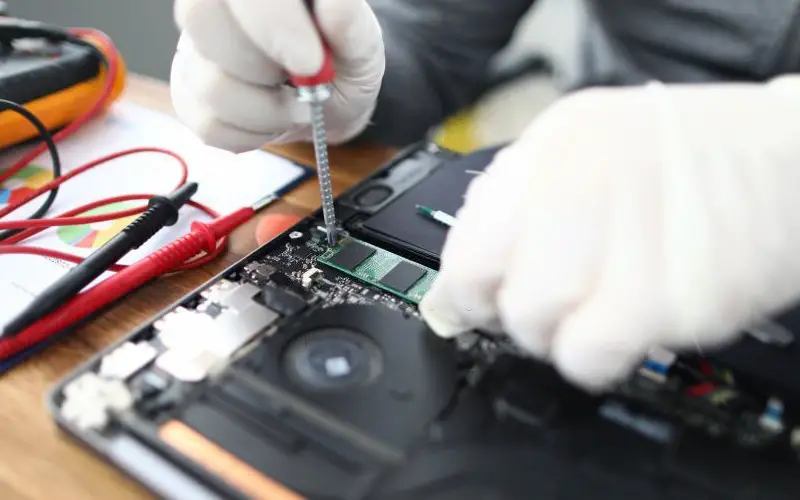NVRAM and SSD are both storage devices, but they have different purposes. NVRAM stores data that needs to be accessed quickly, while SSDs are used for long-term storage.
This article will compare NVRAM and SSD, including their benefits and drawbacks.
What is RAM?
Memory is a vital component of any computer, serving as a temporary data store for information that needs to be quickly accessed by the processor. There are two main types of memory in use today: dynamic RAM (DRAM) and static RAM (SRAM).
DRAM is the most common type of memory used in everything from desktop computers to laptops and cell phones. SRAM is more expensive per byte but is typically faster and requires less power than DRAM.
As a result, it is often used in embedded systems where space and power are at a premium. Regardless of the type of memory used, its performance is essential to a computer’s overall speed and efficiency.
Related: VRAM vs RAM
What is NVRAM?
NVRAM, or non-volatile random access memory, is a type of RAM that retain its data after the power has been turned off. Unlike regular SRAM, NVRAM does not require a constant refreshing signal, making it ideal for situations with no active CPU.
Unlike regular DRAM or SRAM, NVRAM has backup flash memory, a small controller, and a battery or super-capacitor. This allows it to keep its data even when the power is off.
When power is restored, the controller moves the contents of the flash back into the SRAM or DRAM, and the processor can resume operation where it left off.
This makes NVRAM especially useful for applications where data needs to be preserved even when there is no power.
There are several different types of NVRAM, each with its advantages and disadvantages. FRAM, or ferroelectric RAM, is one of the most popular types of NVRAM. It is fast and reliable but can be expensive. MRAM, or magnetoresistive RAM, is another type of NVRAM slowly gaining popularity.
It is less expensive than FRAM and can retain its data for much longer periods, making it ideal for applications where data needs to be stored for extended periods.
What is SSD?
With the ever-growing popularity of laptops, tablets, and other mobile devices, solid-state drives (SSDs) are becoming increasingly common. SSDs are an alternative to traditional hard disk drives (HDDs) and offer several advantages over their spinning counterparts.
For starters, SSDs have no moving parts and are much more resistant to physical shock. They also have very fast access times due to their lack of latency, which is the delay that occurs when a disk starts spinning up to reach its operating speed.
This can significantly affect system response time, especially if the SSD is used as the main drive. In addition, SSDs tend to be more energy-efficient than HDDs and generate less heat, which makes them ideal for use in portable devices.
Finally, SSDs are generally quieter than HDDs since they don’t have any moving parts. These factors make SSDs an attractive option for a faster, more durable, and more efficient storage solution.
Related: SSD vs HDD
What is the Difference Between NVRAM and SSD?
NVRAM is a type of RAM that is non-volatile, meaning it does not need to be refreshed constantly like regular SRAM. NVRAM has backup flash memory, a small controller, and a battery or super-capacitor. This allows it to keep its data even when the power is off.
SSDs are an alternative to traditional hard disk drives (HDDs) and offer several advantages over their spinning counterparts. SSDs have no moving parts and are much more resistant to physical shock.
They also have very fast access times due to their lack of latency. In addition, SSDs tend to be more energy-efficient than HDDs and generate less heat. Finally, SSDs are generally quieter than HDDs since they don’t have any moving parts.
Conclusion
NVRAM and SSDs are both types of computer memory that offer certain advantages over traditional RAM and hard disk drives. NVRAM is non-volatile and can retain its data even when the power is off. SSDs are more resistant to physical shock and have very fast access times.
NVRAM and SSDs are becoming increasingly popular as storage solutions for laptops, tablets, and other mobile devices.






